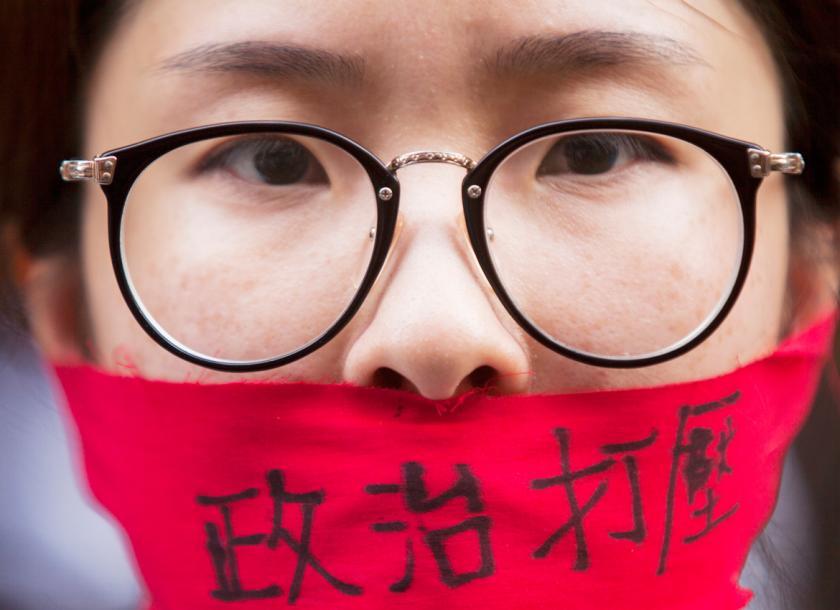
Freedom of speech allows everyone to seek, receive and impart information. People and communities should articulate their opinions, thoughts, and ideas without fear of any form of intimidation. Figure 1 above is an image to illustrate the restriction of freedom of speech. I chose to use this exact image to signify how governmental and non-governmental actors interfere with the flow of information, ideas and opinions directly and indirectly. The Universal Declaration of Human Rights also acknowledges the freedom of speech and expression.
The image above will help the viewers understand how individuals’ capacity to make decisions and express political opinions are limited when stripped of their freedom of speech. The poor democracy beguiled me in the most censored countries, specifically in Asia. The totalitarianism in China and North Korea lacks fundamental democracy and faces rampant violations of other human rights. The writing in the image is in Chinese dialect representing the cultural context of the picture.
The image can be circulated in journals, magazines, and newspapers, as well as in online resources. The general public should view the image to create more awareness of the fundamental freedom of speech in a democracy. Social media is a new method of communication that people use to express their opinions. Through challenge, rebuttal, and debate freely without restraint, societies develop better laws and policies to adjust the quality of the government and protect people from injustice (White 8). Finding this image strengthened my perspective that some constitutional clauses can be used against the freedom of speech.
I hope people will understand how freedom of speech can be limited through censorship. For instance, the Chinese government uses media censorship, subversion of state power, and protection of state powers to torture and incarcerate those criticizing the government. Although freedom of speech censorship help limits obscenity and defamation, some states use the provision to completely suppress the freedom of speech (Billauer and Pfeffer 14). My research on the issue revealed to me that China and North Korea are most affected by the lack of freedom of speech, informing my image selection. In such states, without freedom of speech, truth, criticism, and freedom do not coexist in some societies. For instance, the constructed self-censorship in China has targeted the political opposition; hence, it can be concluded that the leadership is more monocratic than democratic. China’s constitution guarantees citizens freedom of speech and expression, but the opacity of Chinese media regulations dissolves the freedom of speech. The image begs the question of how people lack freedom of speech in a country whose constitution protects the same right. My research will interpret the question in the picture of how people may constitutionally have the freedom of speech and still get restraint for the same.
People who exercise their freedom of speech benefit from the ability to voice their opinions. People who can express their thoughts allow them to be creative and flourish. My research on freedom of speech suggested that censorship of speech should be precise to prevent government suppression. The concept of democracy is of self-government and the people; hence, people’s opinions are part of democracy. We should defend the right to express ourselves for a smooth democracy. The Figure 1 above represents the violation of freedom of speech through government interference conditioned by censorship of the law.
Works Cited
Billauer, Barbara Pfeffer. “Muzzling Anti-Vaxxer FEAR* Speech: Overcoming Free Speech Obstacles with Compelled Speech.” Available at SSRN 3780729 2021.
Menkes, Jerzy. “Freedom of speech in the age of digitalisation: Opportunities and threats.” The European Union Digital Single Market. Taylor & Francis, 2022.
White, G. Edward. “Falsity and the First Amendment.” SMU L. Rev. 72 (2019): 513.